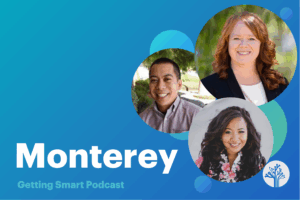10 Entry Points For Next-Gen Learning

The Broad Residency prepares talented professionals for important leadership roles in urban districts. One of them asked me to outline entry points for next-gen learning. I see public school districts using 10 pivot points to launch their own blended learning revolution.
1.Teacher leadership. The best place to start is to find out what teachers are already doing by visiting classrooms and using a quick online curriculum audit (like Curriculum Insight). Developing teacher leaders with a program like the CityBridge Fellowship is great place to start. Some districts create a network of EdTech leaders from each school.
2. Online assessment. Most states just concluded their first large scale experience with online assessment. Some districts will want to make adjustments and improvements in student access to technology before the end of next year with the goal of matching the instructional environment and the testing environment.
3. Textbook replacement. I visited a district last week that decided to ditch a $10 million textbook adoption in favor of open digital content. They shifted the budget to student access devices and teacher development. It just doesn’t make sense to buy print textbooks anymore.
4. Deeper learning. Some districts want to move away from a test-prep focus by challenging students to think, write, create, and present. New blended models create personalized playlists to prepare students for success in challenging project-based learning.
5. Struggling students. Flex models (online learning with onsite support) can be a productive option for over-aged under-credited students. Students move at their own pace in flex schools making them a great place for a district to pilot competency-based learning. (See 10 Reasons Every District Should Open a Flex School.)
6. Online learning. Districts should have an online school and partner to provide broader access to upper division courses (AP, dual enrollment, STEM, CTE), electives, and world languages. A full time option can serve homebound students, homeschool students, and can boost district enrollment.
7. Turnaround. Houston is infusing blended learning into the Apollo turnaround program. Michigan’s Education Achievement Authority is turning around the lowest performing schools in the state with an innovative school model and platform.
8. Innovation grants. Working with a foundation, districts can make innovation grants available to teams of teachers (like Mesa AZ) or to schools seeking transformation. The NGLC grant programs in Chicago and DC are great examples.
9. Underserved populations. Improving career education (see 10 ways to kickstart CTE), better meeting special needs (see 5 Ways New Tools & Schools are Transforming Special Education), leverage community assets, or address cost pressures.
10. Better for less. Budget pressure and the need to help more students reach high standards suggests doing things differently. Districts are using blended learning to extend the reach of their best teachers (see OpportunityCulture). Districts are using online learning to save money (e.g., replace a small AP class with a catalog of online AP classes) and reinvest in core classes.
The best reason to consider blended learning is student achievement. (See a summary of ways blended learning is boosting achievement.) All the best school networks in the country are blending the best of online and face-to-face learning to create learning environments that work better for students and teachers. Starting a community conversation about what students should know and be able to do may be the best entry point of all.
For more see:







0 Comments
Leave a Comment
Your email address will not be published. All fields are required.